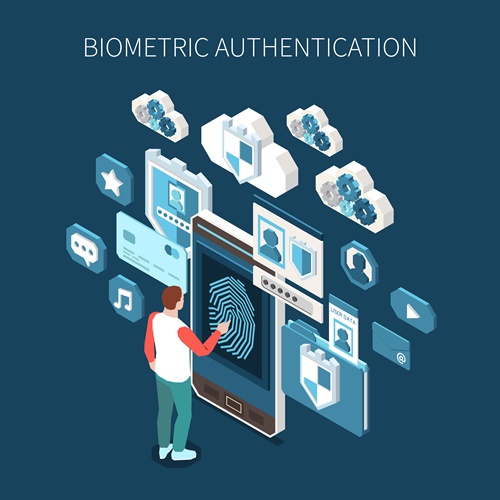In today’s hyper-connected world, businesses are constantly seeking innovative ways to understand and anticipate consumer behavior. Traditional methods like surveys and focus groups offer valuable insights, but they often rely on self-reported data, which can be subjective and inaccurate. Enter behavioral biometrics, a cutting-edge technology that leverages unique user patterns to predict consumer preferences in real-time. By analyzing subtle cues like typing speed, mouse movements, scrolling behavior, and even how a user holds their device, businesses can gain a deeper understanding of their customers and personalize their experiences like never before.
What is Behavioral Biometrics?
Unlike traditional biometrics that focus on physical characteristics like fingerprints or facial recognition, behavioral biometrics examines the way a user interacts with technology. It’s about understanding the “how” rather than the “who.” This approach allows companies to create a dynamic profile of each user, capturing their unique digital footprint. This profile is constantly updated and refined as the user interacts with websites, apps, and other digital platforms, providing a continuous stream of insights into their evolving preferences.
How Does it Work?
Behavioral biometrics systems collect and analyze vast amounts of data related to user interactions. This data is then processed using sophisticated algorithms and machine learning models to identify patterns and anomalies. For example, a user who consistently scrolls quickly through product pages might be more interested in browsing than in-depth product information. Someone who hesitates before clicking the “purchase” button might have concerns about pricing or shipping. These seemingly insignificant actions, when aggregated and analyzed, paint a rich picture of the user’s intent and preferences.
Benefits for Businesses:
The insights gleaned from behavioral biometrics offer a multitude of benefits for businesses:
- Personalized Experiences: By understanding individual preferences, businesses can tailor product recommendations, offers, and content to each user, increasing engagement and conversion rates.
- Enhanced Customer Understanding: Behavioral biometrics provides a deeper understanding of customer needs and pain points, allowing businesses to improve their products and services.
- Real-Time Insights: Unlike traditional market research, behavioral biometrics provides real-time data, enabling businesses to react quickly to changing trends and customer behavior.
- Fraud Detection: Anomalous behavior can be a red flag for fraudulent activity. Behavioral biometrics can help identify and prevent fraud by detecting deviations from established user patterns.
- Improved User Experience: By understanding how users interact with their platforms, businesses can optimize the user interface and user experience (UI/UX) for greater satisfaction and ease of use.
Case Studies:
Case Study 1: E-commerce Personalization:
A large e-commerce retailer implemented a behavioral biometrics system to personalize the shopping experience for its customers. By analyzing mouse movements, scrolling behavior, and time spent on specific product pages, the retailer was able to identify individual preferences and tailor product recommendations accordingly. The system also identified users who were abandoning their shopping carts and triggered personalized pop-up offers to incentivize them to complete their purchase. As a result, the retailer saw a significant increase in conversion rates and customer satisfaction.
Case Study 2: Fraud Prevention in Online Banking:
A major bank integrated behavioral biometrics into its online banking platform to enhance security and prevent fraud. The system analyzed typing speed, mouse movements, and login patterns to establish a baseline for each user’s normal behavior. If the system detected any deviations from this baseline, such as an unusually fast typing speed or a login from an unfamiliar location, it would flag the transaction for further review or require additional authentication. This helped the bank to significantly reduce fraudulent activity and protect its customers’ accounts.
Challenges and Considerations:
While behavioral biometrics offers immense potential, there are also challenges and ethical considerations to address:
- Data Privacy: Collecting and analyzing user behavior data raises concerns about privacy. Businesses must be transparent about how they are using this data and ensure they are complying with all relevant regulations.
- Accuracy and Reliability: The accuracy of behavioral biometrics systems depends on the quality and quantity of data collected. It is crucial to use robust algorithms and machine learning models to ensure reliable results.
- User Acceptance: Users may be hesitant to share their behavioral data if they are not aware of the benefits or if they have concerns about privacy. Businesses need to educate users about the value of behavioral biometrics and address any concerns they may have.
The Future of Behavioral Biometrics:
Behavioral biometrics is still a relatively nascent technology, but it is rapidly evolving. As technology advances and data collection methods become more sophisticated, we can expect to see even more innovative applications of behavioral biometrics in the future. From personalized healthcare recommendations to adaptive learning platforms, the possibilities are endless.
Conclusion:
Behavioral biometrics is a powerful tool that can provide businesses with valuable insights into consumer behavior. By understanding how users interact with technology, businesses can personalize experiences, enhance customer understanding, and improve security. As the technology continues to develop, it is poised to revolutionize the way businesses interact with their customers. However, it is crucial to address the ethical considerations and ensure data privacy to build trust and ensure the responsible use of this powerful technology.


